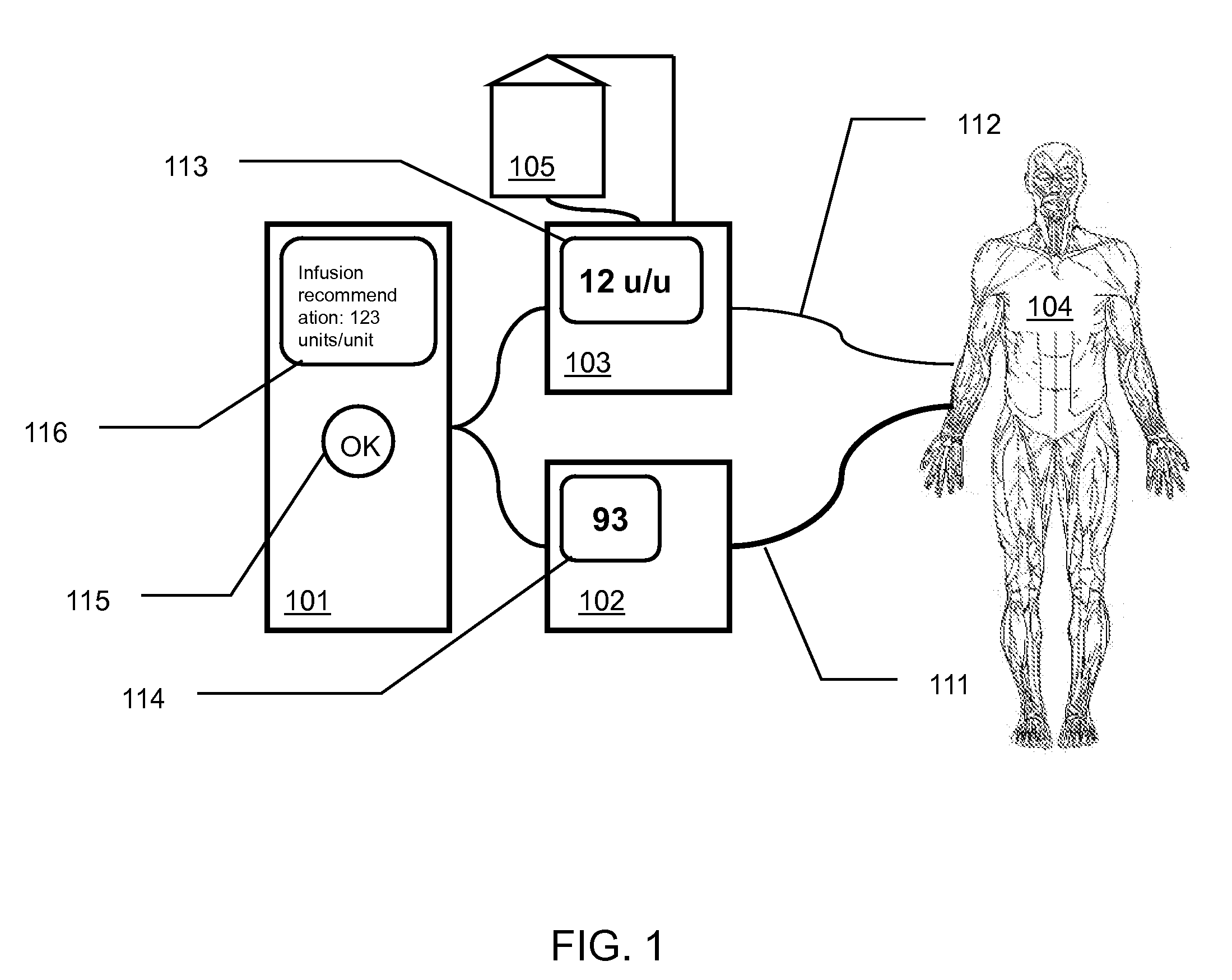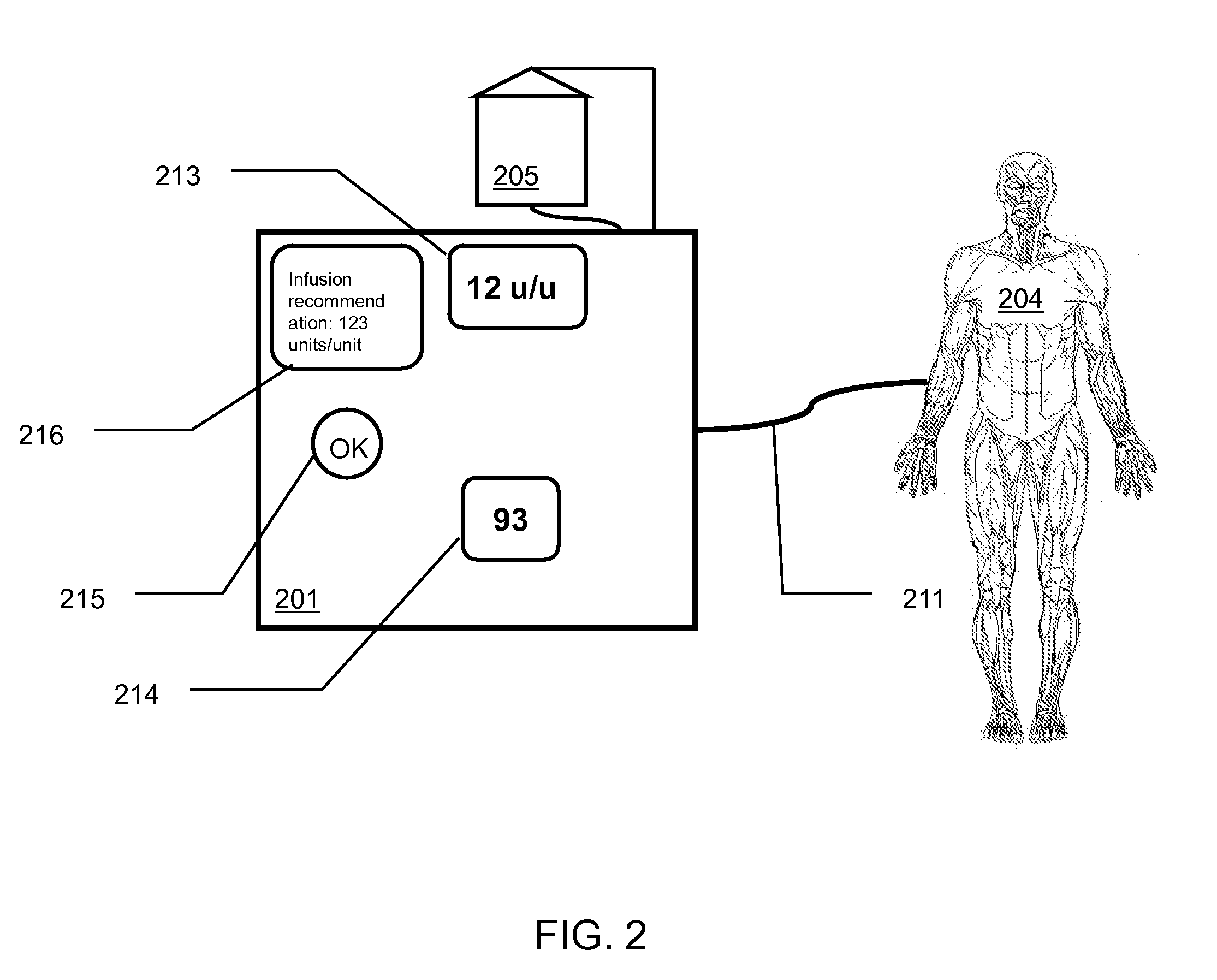Clinician-controlled semi-automated medication management
a semi-automated, medication technology, applied in the direction of diagnostics, diagnostic recording/measuring, other medical devices, etc., can solve the problems of increasing labor and complexity of tgc protocols, affecting the effectiveness of medication management, and sensitive techniques, so as to reduce the chance of human error and effective management of analy
- Summary
- Abstract
- Description
- Claims
- Application Information
AI Technical Summary
Benefits of technology
Problems solved by technology
Method used
Image
Examples
Embodiment Construction
[0021]The present invention comprises methods and apparatuses of medication management based upon active authorization of medication infusion by a clinician that can provide for effective management of an analyte in a patient's blood, reducing the opportunities for human error common with current manual systems while still placing final control of the medication management with the human clinician.
[0022]FIG. 1 is a schematic illustration of an exemplary glucose management system according to the present invention. An automated glucose measurement system 102 is in communication 111 with a patient 104 such that the automated glucose measurement system can determine the glucose level, or concentration value, of the patient's blood, or an indicator thereof. A variety of glucose measurement systems can be used with the present invention as described later. The automated glucose measurement system can communicate the present or most recent glucose level, or other information relating to t...
PUM
 Login to View More
Login to View More Abstract
Description
Claims
Application Information
 Login to View More
Login to View More - R&D
- Intellectual Property
- Life Sciences
- Materials
- Tech Scout
- Unparalleled Data Quality
- Higher Quality Content
- 60% Fewer Hallucinations
Browse by: Latest US Patents, China's latest patents, Technical Efficacy Thesaurus, Application Domain, Technology Topic, Popular Technical Reports.
© 2025 PatSnap. All rights reserved.Legal|Privacy policy|Modern Slavery Act Transparency Statement|Sitemap|About US| Contact US: help@patsnap.com



